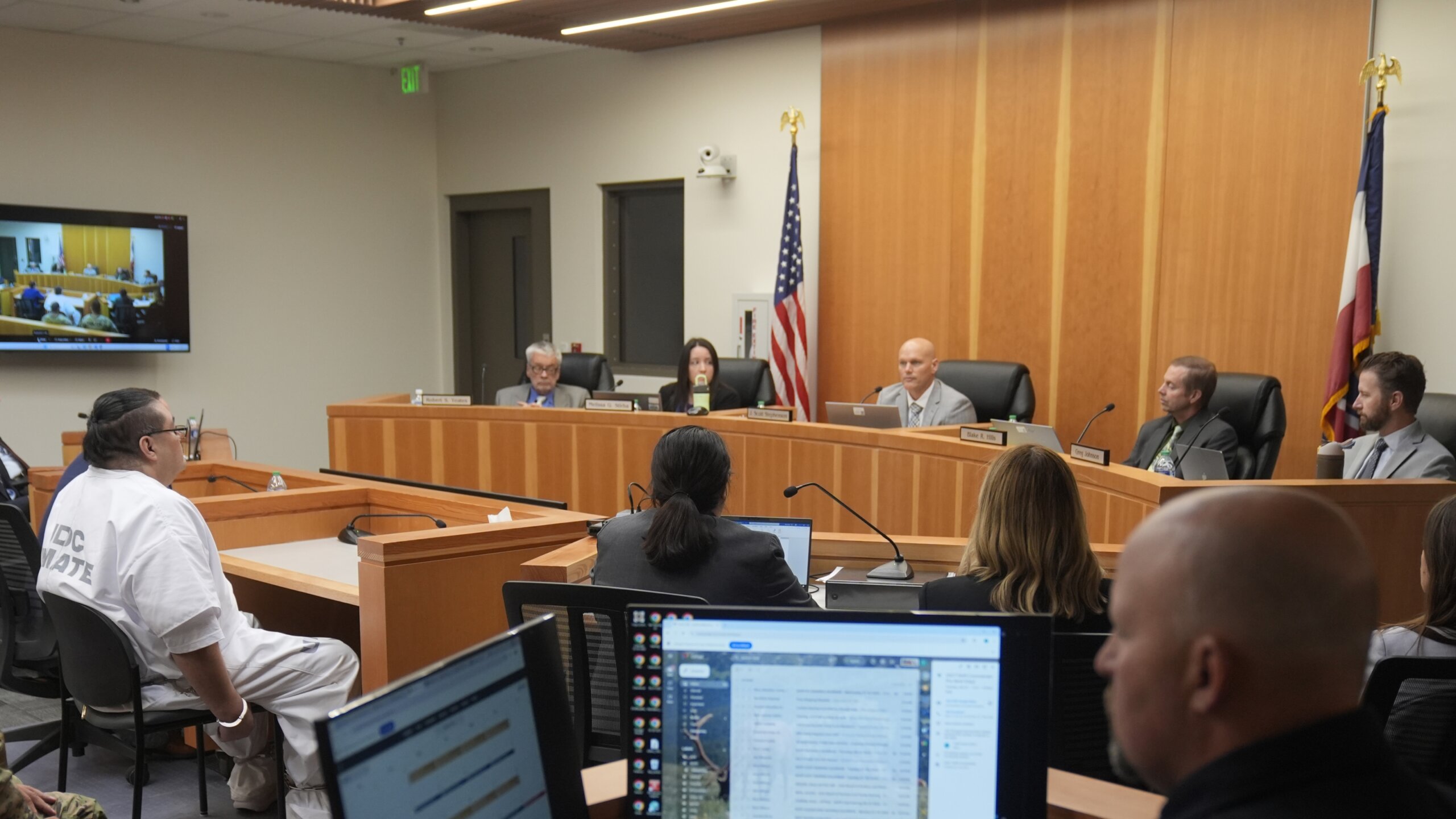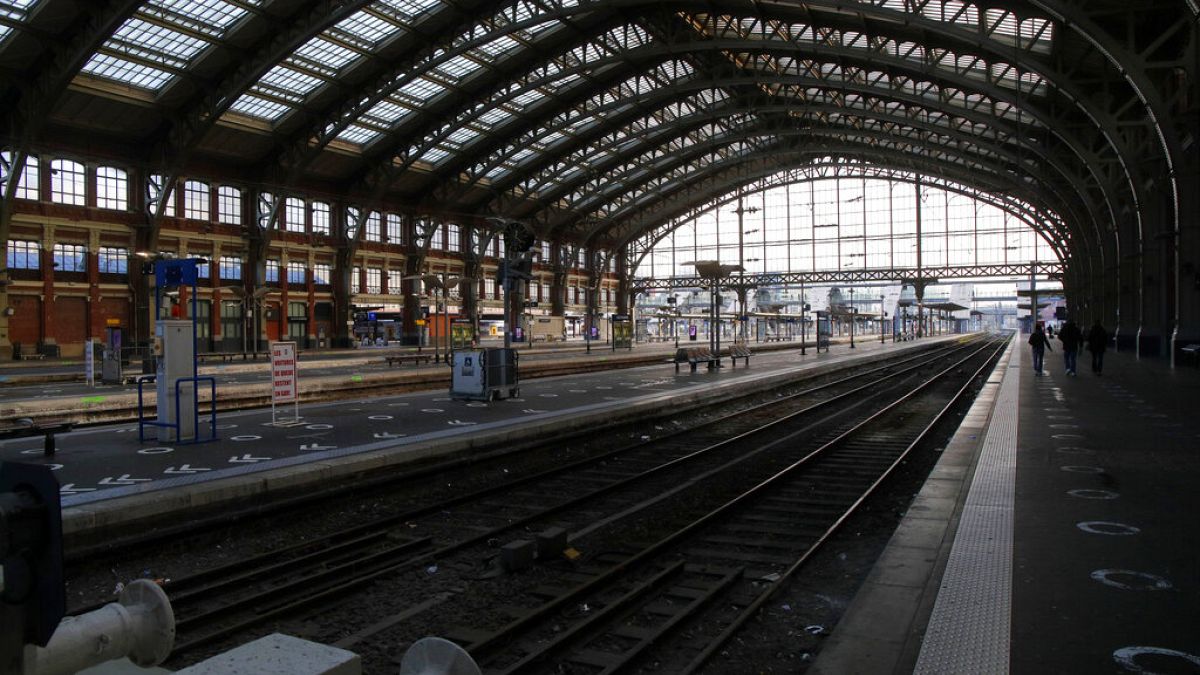Wisconsin
These WI Cities Could Be Ghost Towns By 2100: New Study

WISCONSIN — Thousands of U.S. cities, including some in Wisconsin, are in danger of becoming ghost towns by 2100 due to a multitude of issues, ranging from the decline of industry to lower birth rates to the impacts of climate change, according to a study published recently in the journal Nature Cities.
These and other factors could cause further erosion in the populations of about 15,000 cities nationwide — in every state but Hawaii and the District of Columbia — making them virtual ghost towns with only a fraction of the population they previously had, according to the study.
Overall, the researchers from the University of Illinois Chicago found that population projections for 2100 suggest that nearly half of 30,000 cities nationwide could experience population losses of between 12 percent to 23 percent, and in 27 percent to 44 percent of the populated area.
In Wisconsin, the study said areas around Milwaukee, Green Bay, Wausau, and Superior could all see massive population drops.
But the Madison area will likely see increases.
Depopulation creates enormous, unprecedented challenges for planners, including possible disruptions in basic services like transit, clean water, electricity and internet access, the authors wrote.
Urban planning now is based on growth, but nearly half of U.S. cities are depopulating, senior author Sybil Derrible, an urban engineer at the University of Illinois Chicago, told Scientific American.
“The takeaway is that we need to shift away from growth-based planning, which is going to require an enormous cultural shift in the planning and engineering of cities,” Derrible said.
The authors said the exit from cities for the suburbs creates additional strain and possibly limits “access to much-needed resources in depopulating areas, further exacerbating their challenges.”
Also, they added, immigration could play a vital role in reversing the trend, but also that “resource distribution challenges will persist unless a paradigm shift happens away from growth-based planning alone.”
The Northeast and Midwest are the most likely regions to see big population losses, with Vermont and West Virginia the hardest hit, with 80 percent of cities between the two states expected to shrink.
Five states — Illinois, Kansas, Michigan, Mississippi and New Hampshire — could see population declines in about three-fourths of their cities, according to the study.
Around 40 percent of cities are growing, including New York City, Chicago, Phoenix and Houston. Most of the places projected to see population growth by 2100 are located in the South and West, according to the study.
Most previous studies were based on big cities like Chicago, New York and Los Angeles, “but that doesn’t give us an estimation of the scale of the problem,” lead study author Uttara Sutradhar, a doctoral candidate in civil engineering at the University of Illinois Chicago, told the Scientific American.
The study was based on U.S. Census data from 2000 to 2020, data from the Census Bureau’s American Community Survey and five future climate scenarios, called the Shared Socioeconomic Pathways. That model shows different ways demographics, society and economics could change by 2100, depending on how much global warming the world experiences, according to Scientific American

Wisconsin
Fox News Poll: Trump hits 50% in Wisconsin, edges Harris by just 1 point

At this same point in the election cycle four years ago, Joe Biden was ahead of Donald Trump by 9 percentage points among Wisconsin voters in a two-way presidential matchup. Now, just days after the Republican National Convention ended in Milwaukee, a new Fox News survey shows Wisconsinites give the advantage to Trump over Vice President Kamala Harris — by 1 point.
Harris receives 49% support to Trump’s 50%. In April, it was 48% each for Biden and Trump, and it was also tied in January (47% apiece). In June 2020, Biden was at 49% to Trump’s 40%.
Trump’s edge is mainly due to an expanded 14-point lead among men, up from an 8-point lead over Biden in April. He is also favored over Harris among White men without a college degree (by 20 points), rural voters (+15), and White voters (+2).
Harris receives a bit more support among Democrats (96%) than Trump gets among Republicans (93%), but he makes up the difference by having a 4-point advantage among Independents.
HARRIS’ SHIFT FROM TOUGH-ON-CRIME PROSECUTOR TO SOCIAL JUSTICE ADVOCATE FACES SCRUTINY FROM CONSERVATIVE GROUP
Some of Harris’ best groups include urban voters (+19 over Trump), Whites with a college degree (+18), and suburban women (+13). Her numbers roughly match or are a bit higher than Biden’s were in April among Whites without a college degree (+5), Independents (+5), voters under 35 (+4), women (+3), Democrats (+1), Whites (+1), and those ages 65 and over (-1).
The biggest shift is among “double haters” (voters with unfavorable views of both Trump and Biden). Trump was ahead by 1 point in April, but they now favor Harris by 25 points. There are too few Harris-Trump double haters to breakout by vote preference.
Former US President Donald Trump during a campaign event at Trump National Doral Golf Club in Miami, Florida, US, on Tuesday, July 9, 2024. (Eva Marie Uzcategui/Bloomberg via Getty Images)
Trump is favored by 3 points among new voters (haven’t voted in four most recent general elections), and union households go for him by 2 points, which is different from what we see in a couple of other northern industrial states. Union voters prefer Harris by 6 points in Michigan and by 15 points in Minnesota.
Biden’s personal favorable rating was negative by 10 points in April and now he’s underwater by 12. It’s the reverse for Trump, who went from being underwater by 10 points to negative 5 in the new survey. Harris is more popular than both at 49% favorable and 49% unfavorable. JD Vance’s favorability is negative by 7 points, while 15% are unable to rate him.
TRUMP TO RETURN TO PENNSYLVANIA FOR FIRST TIME SINCE ASSASSINATION ATTEMPT
Fifteen percent of Wisconsin voters say they are getting ahead financially, up from 11% six months ago. Still, most continue to feel they are holding steady (41%) or falling behind (43%).
By far, the economy will be the deciding issue this fall. It’s the top priority for 37%, trailed by abortion and immigration at 15% each. All other issues are in the single digits.
Majorities of those prioritizing the economy and immigration back Trump (by 38 and 81 points respectively), while those putting abortion as their top issue prefer Harris by 78 points.
“This poll shows Harris in a slightly stronger position in Wisconsin than Biden based on personal favorability,” says Democratic pollster Chris Anderson, whose company Beacon Research conducts Fox News surveys along with Republican Daron Shaw. “However, with many voters feeling strained financially and union households breaking for Trump, she has work to do convincing voters they’ll be better off continuing with a Democrat in the White House.”
In a potential 5-way race, Harris and Trump tie at 46% each, with Robert F. Kennedy Jr. receiving 5%, and Jill Stein and Cornel West at 1% each. Support for Kennedy was 9% in April.
Kennedy takes more support from Trump (6%) than Harris (2%), but it evens out because the other candidates also take from her (3%).
The large 75% approval of Biden withdrawing from the presidential race is widespread, as it includes 88% of Democrats and two-thirds of Republicans (65%) and Independents (69%).

Vice President Kamala Harris speaks following her meeting with Netanyahu on Thursday. (AP/Julia Nikhinson)
That consensus disappears on the issue of Biden finishing his term: 92% of Democrats and 58% Independents think he should, while 57% of Republicans think he should resign. Overall, two-thirds think he should stick around.
In 2020, Biden won Wisconsin by 20,682 votes, less than one percentage point. Trump’s 2016 victory was also by less than a point (22,748 votes).
Poll-pourri
In the senate race, Democratic Sen. Tammy Baldwin leads likely Republican challenger Eric Hovde by a 54-43% margin, running 5 points ahead of Harris’ support in the presidential race. (The Wisconsin primary is August 13.)
More Trump supporters are ticket splitters, as 83% of his backers favor Hovde, while 96% of Harris supporters go for Baldwin.
CLICK HERE TO GET THE FOX NEWS APP
Overall, three-quarters of Wisconsin voters say they are extremely motivated to vote in the presidential election, and they split 50% Harris vs. 49% Trump. That’s because slightly more Harris supporters (76%) than Trump supporters (73%) say they are extremely motivated.

Former US President Donald Trump arrives to the Republican National Convention (RNC) at the Fiserv Forum in Milwaukee, Wisconsin, US, on Wednesday, July 17, 2024. The RNC chairman warned against complacency when his party concludes its official nominating jamboree this week with polls predicting ex-President Donald Trump prevailing over President Joe Biden in the November election. (David Paul Morris/Bloomberg via Getty Images)
Fully 84% of Wisconsin Democrats want Harris to replace Biden as their party’s nominee — no other candidate gets more than 2% support.
CLICK HERE FOR TOPLINE AND CROSSTABS
Conducted July 22-24, 2024 under the joint direction of Beacon Research (D) and Shaw & Company Research (R), this Fox News Poll includes interviews with a sample of 1,046 Wisconsin registered voters randomly selected from a statewide voter file. Respondents spoke with live interviewers on landlines (127) and cellphones (649) or completed the survey online after receiving a text (270). Results based on the full sample have a margin of sampling error of ±3 percentage points. Sampling error associated with subgroup results is higher. In addition to sampling error, question wording and order can influence results. Weights are generally applied to age, race, education, and area variables to ensure the demographics are representative of the registered voter population. Sources for developing weight targets include the American Community Survey, Fox News Voter Analysis, and voter file data.
Fox News’ Victoria Balara contributed to this report.
Wisconsin
Why are gas prices higher in Wisconsin this week?

Kwik Trip is beloved Wisconsin gas station without store in Milwaukee.
Kwik Trip is more than just a gas station. It’s a grocery store. It’s clean public bathrooms. It’s friendly staff. But it’s also not in Milwaukee.
You might have noticed gas prices inched up when you visited the fuel tanks this week.
You’re not imagining it: gas costs are up across Wisconsin, with prices rising more than 17 cents on average in the last week, according to AAA.
Here’s why gas prices are surging and which Wisconsin cities are feeling it the most.
Why are gas prices higher in Wisconsin this week?
A storm-related outage at an ExxonMobil facility in Illinois may be to blame for rising gas prices across the Upper Midwest this week, AAA said in a news release Thursday.
The refinery in Joliet, Illinois lost power earlier this month after a tornado touched down in the Chicago area on July 16. The facility, which processes 248,000 barrels per day, was about 50 miles from the tornado and battered by heavy wind and rain.
As of July 17, Reuters reported the refinery would be down for at least a week with plans to power back up in “late July.”
However, while the outage drives up prices across the Midwest, falling oil prices in the U.S. may help steady costs, AAA spokesperson Andrew Gross said in the news release.
“In April, a barrel of oil was in the upper $80s, but today, it is $10 a barrel cheaper. That might mitigate any upward pressure on pump prices,” Gross said.
Which Wisconsin cities have highest gas prices?
Counties in eastern Wisconsin are generally seeing the highest gas prices, while counties in the western half of the state are seeing prices 10 to 30 cents below Friday’s national average of $3.52 per gallon, according to AAA’s daily average gas prices tracker.
Most Wisconsin cities have seen gas prices tick up in the last week. Listed below are the average gas prices for a regular gallon of gas in major Wisconsin cities on Friday, compared to a week ago, according to AAA. All prices are rounded to the nearest hundredth of a cent.
Average gas prices in Wisconsin cities on July 26:
- Milwaukee-Waukesha: $3.80, up from $3.45 last week
- Madison: $3.45, up from $3. 43 last week
- Appleton: $3.44, up from $3.30 last week
- Eau Claire: $3.24, up from $3.20 last week
- Fond Du Lac: $3.37, same as $3.37 last week
- Green Bay: $3.50, up from $3.36 last week
- Kenosha County: $3.83, up from $3.50 last week
- Oshkosh: $3.44, up from $3.37 last week
- Racine: $3.78, up from $3.44 last week
- Sheboygan: $3.47, up from $3.33 last week
- Wausau: $3.47, up from $3.38 last week
Wisconsin
NOAA, Biden-Harris Administration announce $1.45 million for joint Wisconsin, Minnesota, and Michigan project as part of Investing in America Agenda

Today, Secretary of Commerce Gina Raimondo announced that the Department of Commerce and NOAA have recommended $1.45 million for a project involving Wisconsin to make the state’s coast more resilient to climate change and other coastal hazards. The project encompasses the Lake Superior Basin region of Wisconsin, Minnesota and Michigan. The awards are being made under the Biden Administration’s Climate Resilience Regional Challenge, a competitive, $575 million program funded through the nearly $6 billion total investment under the Biden-Harris Administration’s Inflation Reduction Act.
“As part of President Biden’s commitment to combating the climate crisis, we are investing $575 million to help make sure America’s coastal communities are more resilient to the effects of climate change,” said U.S. Secretary of Commerce Gina Raimondo. “As part of this historic investment in our nation’s climate resilience the Biden-Harris Administration is investing $1.45 million to help underserved communities in Wisconsin develop and implement new strategies to protect themselves from increased flooding and other impacts of climate change.”
Administered by the Department of Commerce and NOAA, the Climate-Ready Coasts initiative is focused on investing in high-impact projects that create climate solutions by storing carbon; building resilience to coastal hazards such as extreme weather events, pollution and marine debris; restoring coastal habitats that help wildlife and humans thrive; building the capacity of underserved communities and support community-driven restoration; and providing employment opportunities.
“Over the past decade, this area has seen, firsthand, the destructive impacts of climate change on lives and livelihoods,” said NOAA Administrator Rick Spinrad, Ph.D. “This funding will allow local governments and tribal communities in Wisconsin to address the problem of repetitive flooding, from identifying root causes to implementing long-lasting solutions.”
The recommended $1,451,065 in total funds for the project will be administered by the Northwest Regional Planning Commission. The project, Accelerating Natural Flood Management in the Lake Superior Basin, will be a joint effort encompassing areas of Wisconsin, Minnesota and Michigan hit hard by catastrophic, repetitive flooding (six federal disaster declarations between 2012 and 2022), with impacts to local communities and an extensive network of state, local, and tribally managed roads. Funding will be used to 1) identify how the loss of headwater wetland storage and floodplain connectivity is contributing to the flooding problem; and 2) implement high-impact, nature-based solutions to combat this flooding by restoring the natural hydrology. The root causes of flooding and potential restoration opportunities will be investigated using new approaches that integrate spatial and field-based assessments.
“Whether it’s flooding, drought, or extreme weather, communities across Wisconsin are dealing with the costly impacts of our changing climate. Our Inflation Reduction Act is making essential investments to make our communities safer and our infrastructure more resilient for the next generation,” said Senator Tammy Baldwin. “I was proud to support this investment for Northwest Wisconsin to protect the infrastructure families rely on and implement new solutions to address flooding.”
“With climate change causing more extreme weather events and devastating flooding across our state, building flood resilience through high-impact, nature-based solutions to protect our communities and our natural resources is a top priority for us in Wisconsin,” said Wisconsin Governor Tony Evers. “I’m grateful to the Biden-Harris Administration and NOAA for their support in these efforts and to the Northwest Regional Planning Commission and our partners for developing a program that will make a lasting difference for folks affected by flooding and on our region’s environmental footprint.”
Additional information is available on the Climate Resilience Regional Challenge website.
Climate, weather, and water affect all life on our ocean planet. NOAA’s mission is to understand and predict our changing environment, from the deep sea to outer space, and to manage and conserve America’s coastal and marine resources.
-

 World1 week ago
World1 week agoOne dead after car crashes into restaurant in Paris
-

 Midwest1 week ago
Midwest1 week agoMichigan rep posts video response to Stephen Colbert's joke about his RNC speech: 'Touché'
-

 News1 week ago
News1 week agoVideo: Young Republicans on Why Their Party Isn’t Reaching Gen Z (And What They Can Do About It)
-

 News1 week ago
News1 week agoIn Milwaukee, Black Voters Struggle to Find a Home With Either Party
-

 Politics1 week ago
Politics1 week agoFox News Politics: The Call is Coming from Inside the House
-

 News1 week ago
News1 week agoVideo: J.D. Vance Accepts Vice-Presidential Nomination
-

 Movie Reviews1 week ago
Movie Reviews1 week agoMovie Review: A new generation drives into the storm in rousing ‘Twisters’
-

 World1 week ago
World1 week agoTrump to take RNC stage for first speech since assassination attempt















